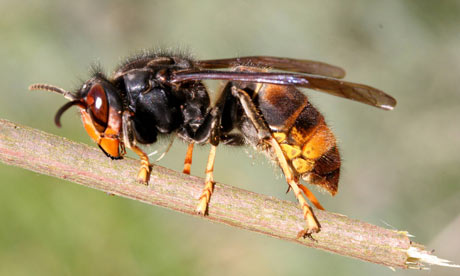 A nest of the paper wasps used in the study (Polybia aequatorialis), taken in the field near Monteverde, Costa Rica. Colonies of several thousand adult workers live in a paper nest. Workers usually start with tasks inside the nest, then on the surface. They 'graduate' to become food foragers. (Courtesy of Sean O'Donnell/University of Washington)
A nest of the paper wasps used in the study (Polybia aequatorialis), taken in the field near Monteverde, Costa Rica. Colonies of several thousand adult workers live in a paper nest. Workers usually start with tasks inside the nest, then on the surface. They 'graduate' to become food foragers. (Courtesy of Sean O'Donnell/University of Washington) From The Christian Science Monitor:
Seedlings know when they're from the same plant, and wasps get smarter as they get tougher tasks, studies show.
Plants and pea brains can be smarter than you think. Plants like those that discriminate between siblings and strangers within their own species, that is. And pea brains like the tropical paper wasp that reorganizes its tiny brain to tackle increasingly complex tasks.
These research tidbits illustrate the fact that acquiring and using information is a fundamental aspect of organic life.
Read more ....

















